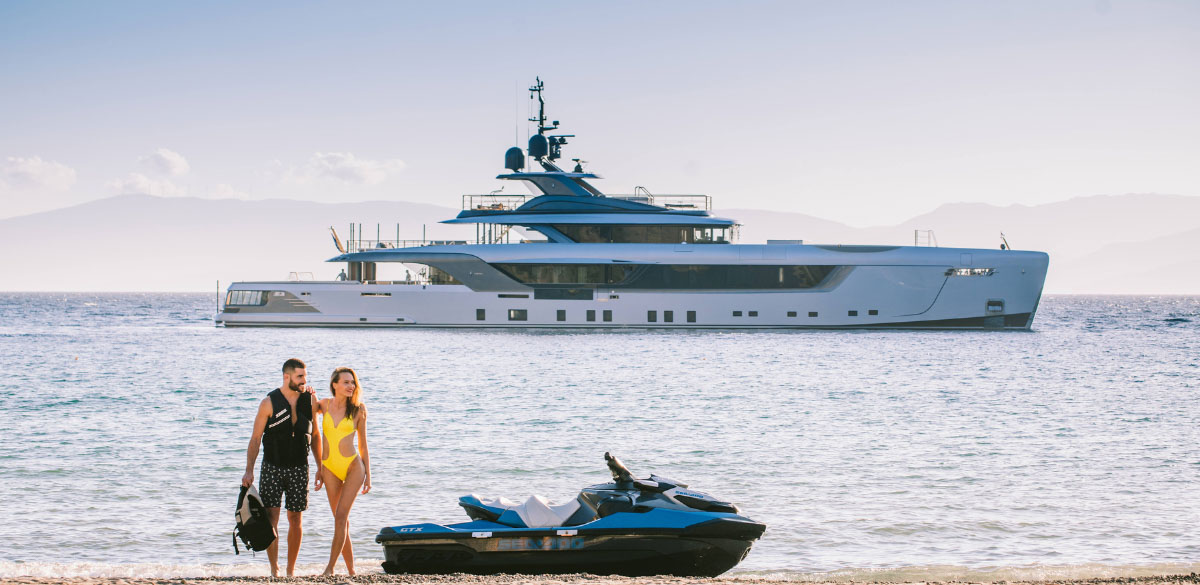IYC share their insight on the charter market, and discuss the trends and challenges they see up ahead.
As we step into the latter half of 2023 and the Mediterranean Yacht season draws to a close, the superyacht charter market finds itself at an inflexion point. Contrary to some claims that demand may be waning, industry insiders report that the challenge isn’t a lack of interest, but rather, a shortage of supply. This is further complicated by high costs of goods and fuel, changing consumer preferences, and owners increasingly choosing to use their yachts privately.
Digital Drives Growth
“Digital continues to drive growth for our charter department, with web-generated charters accounting for 30% of total charters booked in 2023 to date,” notes Irini Sarantis, Chief Digital Officer at IYC. With features like the recently launched RESERVE functionality, IYC has become a trendsetter in empowering clients’ decision-making processes. The expectation? A continued surge in direct bookings.
Economic Factors: Cost of Provisions and Fuel
Fuel and goods prices are a concern, acknowledges Agne Pavia, a Charter Consultant at IYC. “With the cost of goods and fuel at a high, clients are requested to pay a higher APA (35% or 40% versus 30% of the total charter fee) to cover the cost of provisions and running expenses for their charter.” The impact is especially noticeable in the smaller yacht segment, leading to increasing interest in luxury catamarans and sailing yachts for their fuel efficiency.
The Shift to Fuel-Efficient Itineraries and Yachts
Sophia Penvern, Sales and Charter Consultant at IYC, points out that clients are increasingly seeking yachts loaded with a rich collection of water toys. “Yachts with a rich water toy collection have become even more popular. As certain charter clients are selecting to visit more remote locations, toys are proving to be a great pastime and gaining in importance on board.”
A Changing Landscape: Owner Usage and Availability
The trend of owners opting for more private use of their yachts means less availability for potential charter clients. This shortage of supply has not only driven up prices but also led to changing cruising patterns and an uptick in demand for alternative, ‘fuel-efficient’ itineraries.
Destination Trends: Where are People Going?
According to data for the 2023 YTD summer charter season published by IYC, East Mediterranean destinations continue to dominate, accounting for 53% of total bookings. Greece has retained its position as the #1 global charter destination, thanks in part to low rates in duty-free fuel and VAT. Croatia and Turkey are also showing a stable market share in bookings. Serhan Cengiz who sits on the board of the Turkish Yacht Brokers Association (TYBA) expands, “Since the lengthy period of uncertainty in 2020 and 2021 Turkish Yachting finally saw the glimmer of hope in 2022 and has returned to normality in the summer of 2023. TYBA has continued to promote Turkish yachting and helped to pin Turkey firmly back on the yachting map.”
West Mediterranean
On the flip side, the West Mediterranean region, accounting for 44% of summer charters, shows a slower booking rate compared to last year. Italy remains stable at a 19% market share, while Spain’s Balearic Islands have experienced a decline from 7% to 6%.
Karen Mortensen Head of Charter at Swisspath Yachting, based in Palma de Mallorca, said ”This season has felt different from previous years. It was harder to secure charters and there was more demand for shorter charter periods. But last year was also an exceptional year: postponed charters from Covid filled booking calendars before the season started. High demand and clients wish to just travel and go out after the pandemic turned last season into a historical one. This season was good, more normalized and demanded harder work from the broker side.”
”We have seen a definite trend of special event and day charters this year,” said Daniel Parenther, Charter Broker at Mallorca Marine Group based in Puerto Portals. ”We have organised a marriage proposal charter, birthday celebrations and more corporate events this year than in previous years.” He echoes the sentiment made by Karen Martensen when he says ”The key to success in a more challenging market is by delivering an exceptional service and experience for our clients.”
Bahamas / New England and the Caribbean
The Bahamas and New England are experiencing a slower booking pace compared to 2022, with their market share dropping from 5% to 4%. The Caribbean remains the top winter destination, although bookings have been slightly sluggish compared to 2022.
Southeast Asia
Southeast Asia is another region that has benefited, although exact numbers are still pending.
What Lies Ahead?
As the industry grapples with challenges like increased costs and limited supply, it’s also adjusting to changing demographics and consumer preferences. The charter market appears to be in flux but certainly not in decline. With digital tools offering greater autonomy to clients and a variety of yachts and destinations to choose from, the future of the charter industry looks not just buoyant but ripe for innovation.
The coming years in the charter market will likely be characterized by an increased focus on efficiency, both in terms of fuel and itinerary planning, along with a rise in digital bookings.



























0 Comments